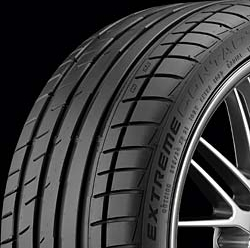Round, black, and easily forgettable–that’s your average car tire.
Often, we don’t think about them until we need to change them, whether the tread is wearing low or we get a puncture. However, it’s well worth considering them more often, as not only are they vital to your safety, but tires also have a big impact on gas mileage.
Good tires
A good tire will do many things. Choose the right make and compound for your car, and you’ll not only enjoy better ride quality and handling, but low noise and long life.
They’ll also save you money in the long run. Don’t always be tempted to choose the cheapest tire out there. Not only will you be compromising on grip, but it may have a shorter life and reduce your fuel efficiency–cheaply-made tires can be a false economy.
Many companies now sell low rolling-resistance “eco” tires, which are designed to slip down the road with less resistance, giving the engine less work to do, and saving you money on gas.
Bad tires
As above, it can be a false economy going for unheard-of brands or low-end tires. It’s worth researching before you buy, based on the criteria you need. Whether that’s dry performance, wet performance, all-season ability or as little rolling-resistance as possible, some tires are better than others.
Checking your tires
You don’t need to be an expert to check the condition of your tires–often, a visual check is enough, and a tire pressure gauge is a useful tool to keep around. In addition, we’d recommend checking on a flat, level surface if possible, and doing so while the tires are still cold–so not after a long drive, for example.
Check the sidewall for bulges and cracks in the rubber. Both are bad news for the tire’s construction and if you’re unlucky, a damaged tire can lead to a blowout.
Check the tread depth. Most states allow a legal minimum of 1.6 milimeters, or 2/32 of an inch, with consistent wear across the tire. Ideally, you want more than 4/32 of an inch, particularly if you live in an area with regular rainfall–a tire with very little tread will clear very little water from the road, reducing grip and increasing stopping distances.
A handy tip for knowing the correct legal minimum depth is to use a penny. Insert it into one of the tread grooves with Abe Lincoln’s head upside-down. If any part of his head is below the tread, then you’re still legal.
Make sure the tire is wearing evenly across the tread. If it isn’t, that could be a sign that your alignment is out, or that the tire is under-inflated–which brings us on to the next section.
Inflation
Inflation levels depend on individual tires, and tire makers usually specify a range between which the tire can be safely inflated. Your car’s user manual will suggest the ideal pressure. Lower pressures can affect wear and increase drag, reducing gas mileage. They’re also liable to overheat at highway speeds, and increase the potential for blowouts.
Some drivers inflate their tires to higher pressures. As long as the maximum pressure limit is respected, this can be perfectly safe. However, although you may see gas mileage improvements at higher pressures, you’ll also get reduced grip and usually, a harsher ride quality. We’d recommend you use the manufacturer’s suggested tire pressure, and monitor it to ensure you always have the best grip and best gas mileage.
Tire pressure gauges are fairly inexpensive, and a weekly check will ensure you’re always at a safe, economical pressure.
Tires don’t have to cause you much stress, and ensuring that yours are always in good condition will both improve safety, and save you money on gas.
A check takes five minutes, and could save you both a lot of money, and potentially, your life.

Tips for Checking Your Tires: Improve Gas Mileage, Safety
by
Tags:

Leave a Reply